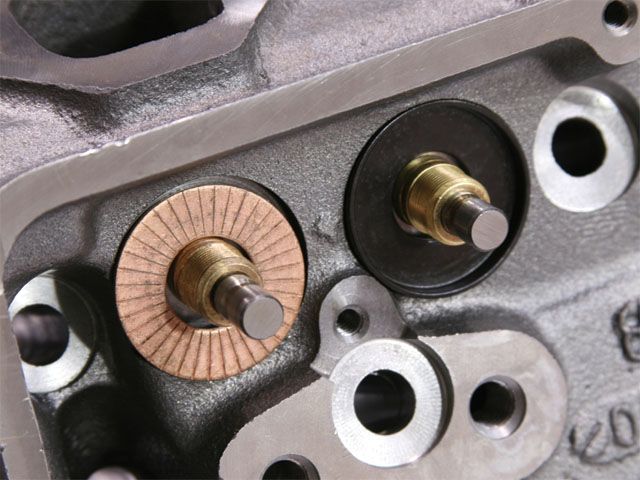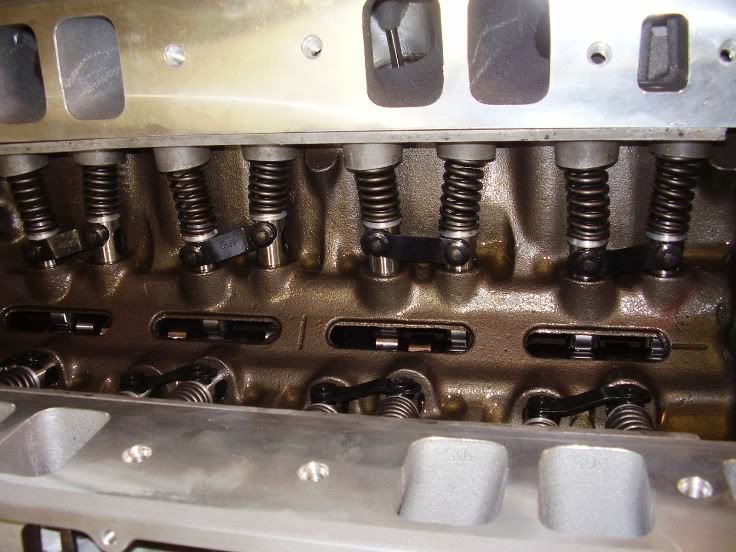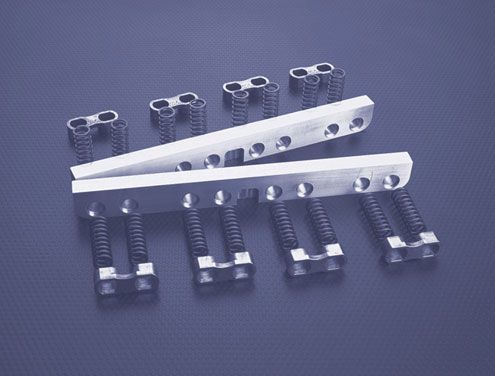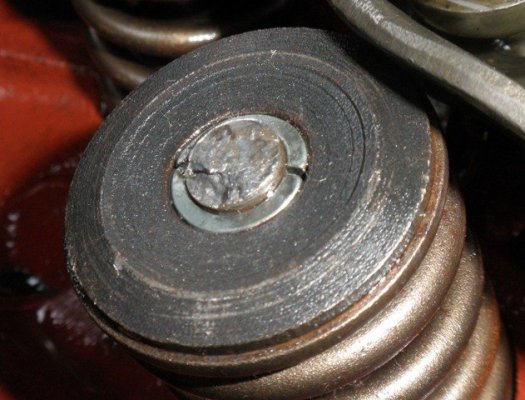I'm trying to decide what I can do to valve springs to improve their durability. I've been researching this for a
couple of day and there is NOT much information about this compared to other components. Below is a list of
those things most anyone could perform in their garage.
Is there anything I'm missing ? What do you do or don't do ?
Deburring the sharp edges where the spring was ground flat on the ends
Compress to coil bind for 10 cycles
Measure spring pressure at installed height
Measure spring pressure at maximum valve lift height
Below is supporting information and links to the complete articles.
Performance Valve Springs and Retainers
http://www.enginebuildermag.com/Article ... iners.aspx
Micropolishing the wire to a mirror-like finish, the stress risers are eliminated along with any chance they might cause the spring to fail.
Spring, Sprang, Sprung: Why Valve Springs Matter So Much
http://www.enginebuildermag.com/Article ... _much.aspx
And no matter what, high-performance valve springs should be pre-cycled prior to being installed
I read a great article written by Paul Titchener of Power Technology while I was researching this article. I had heard of “spring cycling,†a process in which you cycle the valve springs to full coil bind several times to break them in prior to final pressure testing, then measuring before installing them into the cylinder head. Paul’s article explained that they were able to measure almost 10 pounds of lost spring seat pressure by following this spring cycling procedure. This results in more accurate installed heights and less pressure loss when the engine is operated at its racing rpm range. You can read more in Paul’s article at http://www.power-t.com (click on “tech supportâ€).
This cycling process is only for brand new high-performance springs and is not needed for the plain old stock or daily driver applications. I also spoke to Joe Mondello of Mondello Technical School and he says that he cycles all of his race springs and then takes it one step further, by submitting them to a cycle of stress relieving, followed by a cycle of cryogenic freezing. Joe claims to get great results in spring life and performance by this method. You can learn more about Joe’s procedure by going to http://www.mondello.com.
http://www.power-t.com/spring/Bind-Valv ... ester.html
Some engine builders feel that this is clear evidence that taking a valve spring to coil bind during the testing process damages it.
Is this true?
I believe that in some special applications where the spring is not run in a RPM or lift range where it is highly stressed that the opinion is true (more on this later).
However, for the vast majority of valve springs used in racing applications, the engine is run in a range where the spring is being pushed to the upper range of its performance limit. This means that it is being run close to the minimum allowed coil bind clearance and also that the engine RPM is high enough so that spring harmonics come into play.
When the valve spring is run in this condition, even though it has some coil bind clearance, due to the rapid motion of the valve and the resulting spring harmonics, the coils will repeatedly be going into a "local bind" condition, where the coils go through a sequence of individually coming in contact with each other.
You can confirm this by watching a video of a racing valve spring in action, such as this one from Pac Springs:
Pac Springs High Speed Valve Spring Video
Note that the spring harmonics cause the spring coils to move up and down in a wave motion and that because of this harmonic motion the spring coils come in contact with each other in what I like to call a "local bind" condition.
Thus once the spring is being used at racing RPM, the coils repeated get put in a "local bind" condition, and thus once run, the spring effectively gets taken to coil bind during operation.
I believe this is one of the significant reasons why you typically will see an immediate loss in the seat pressure of new springs the first time an engine is run at its racing RPM range.
In addition, I feel you can reduce this seat pressure loss by binding the springs prior to performing the final measurement process, as it puts the springs through the same binding process that is going to occur anyway when the springs are run at racing RPM.
Thus I feel for the typical racing valve spring, you are better off binding the spring a few times on the tester before making the final measurement, as it will then provide you with a more accurate installed height that will result in less pressure loss when the engine is then run at racing RPM.
The only case where I think binding the springs can cause more harm than good is in some applications such as "pure stock" racing, where spring is not installed close to the minimum bind range and the intake system of the engine limits the RPM that the engine can attain. In that case the spring may not endure any significant "local bind" conditions and thus the spring may not see the typical "first run" pressure loss that occurs with racing springs. In this case if obtaining the highest possible seat pressure is important and no spring shimming is allowed, it may be best not to bind the valve springs on the tester.
Paul Titchener, Power Technology









